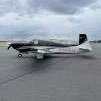LOP again
-
Members Online
- Scottknoll
- N177MC
- 885EW
- Hector
- 1980Mooney
- johnnyr172
- acekng1
- Immelman
- midlifeflyer
- 201er
- KLRDMD
- GMBrown
- Austin
- Rick Junkin
- redbaron1982
- Kelpro999
- hazek
- Jetdriver
- christaylor302
- EricJ
- StandingOvation
- Jeff Uphoff
- rahill
- Scott Dennstaedt, PhD
- billy hellcat
- Paulie
- Parker_Woodruff
- larryb
- emiliocastelli
- Nick81
- glenn reynolds
- TCC
- Greg Ellis
- Stubby
- kasm
- Aaviationist
- MusicCityMooney
- N201MKTurbo
- OR75
- Skyland
- Rich Evans
- jjvanl
- donkaye
- Marc_B
- DXB
- BrentS


Recommended Posts
Join the conversation
You can post now and register later. If you have an account, sign in now to post with your account.